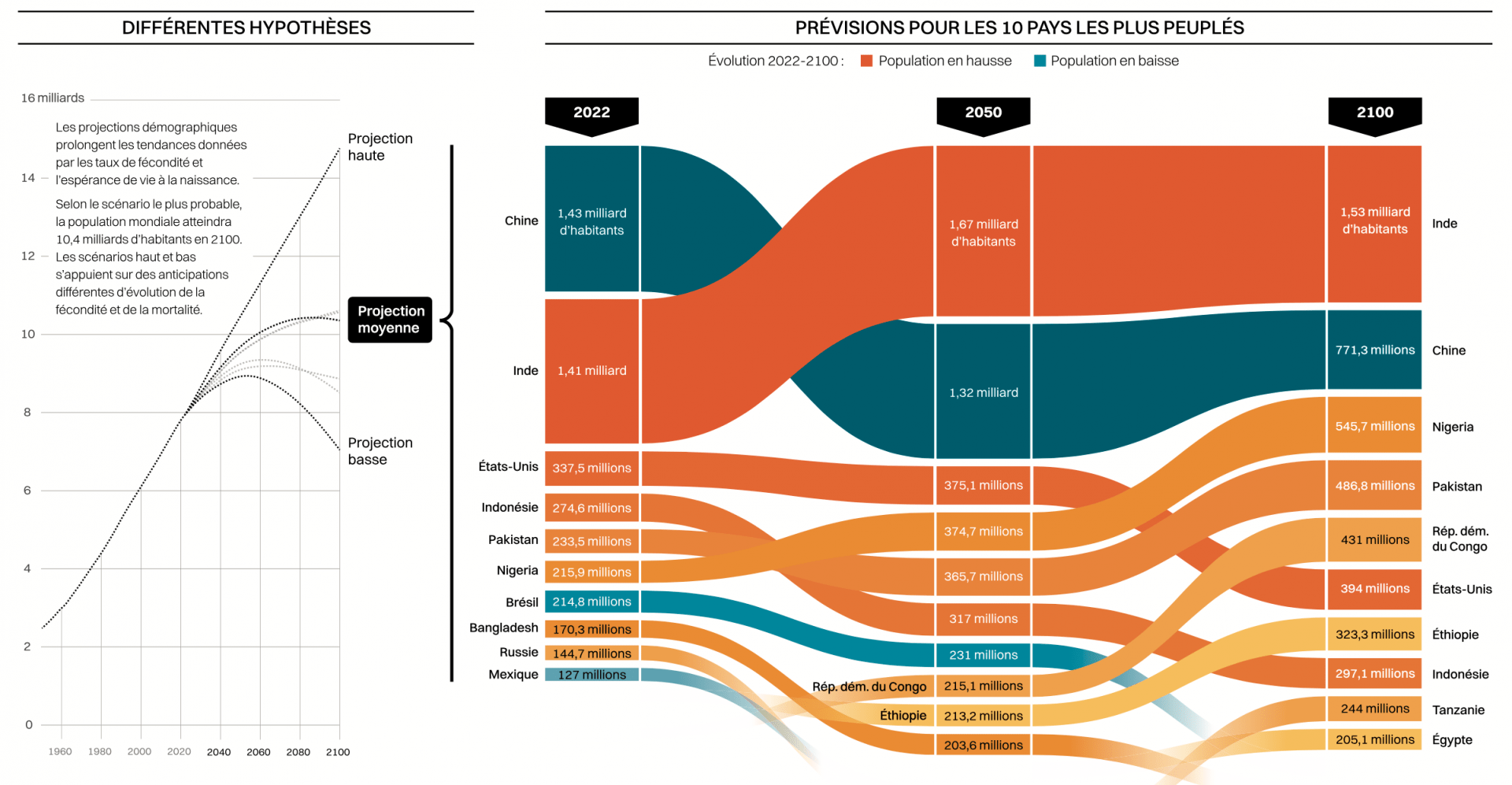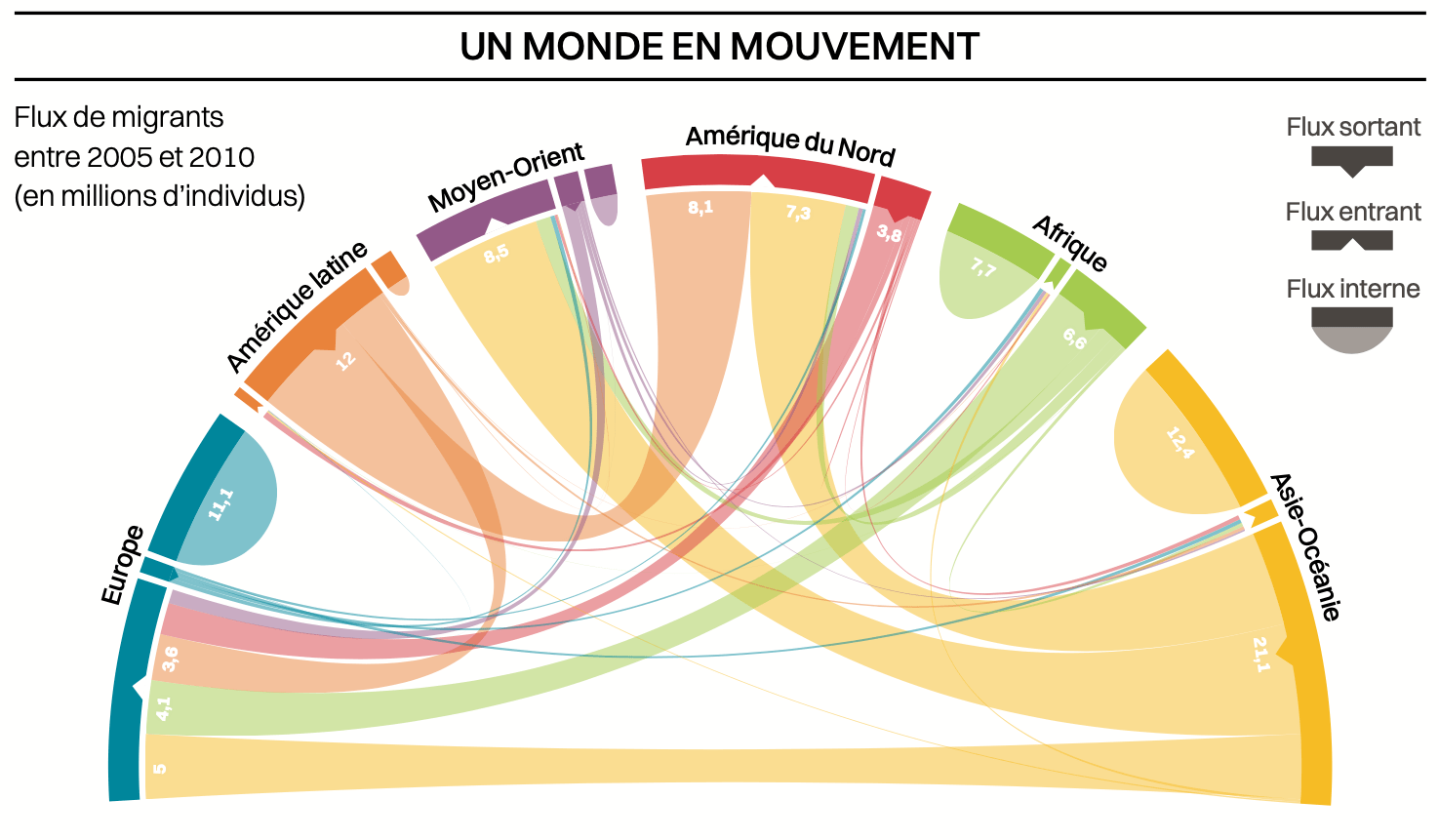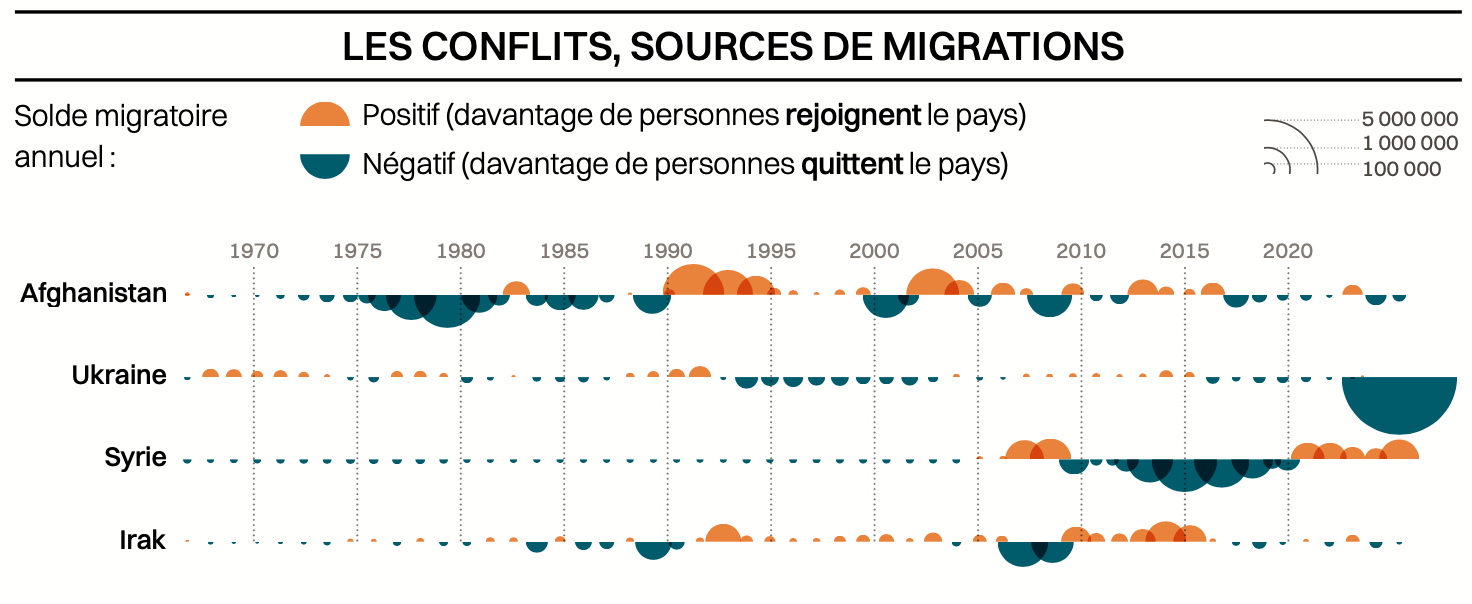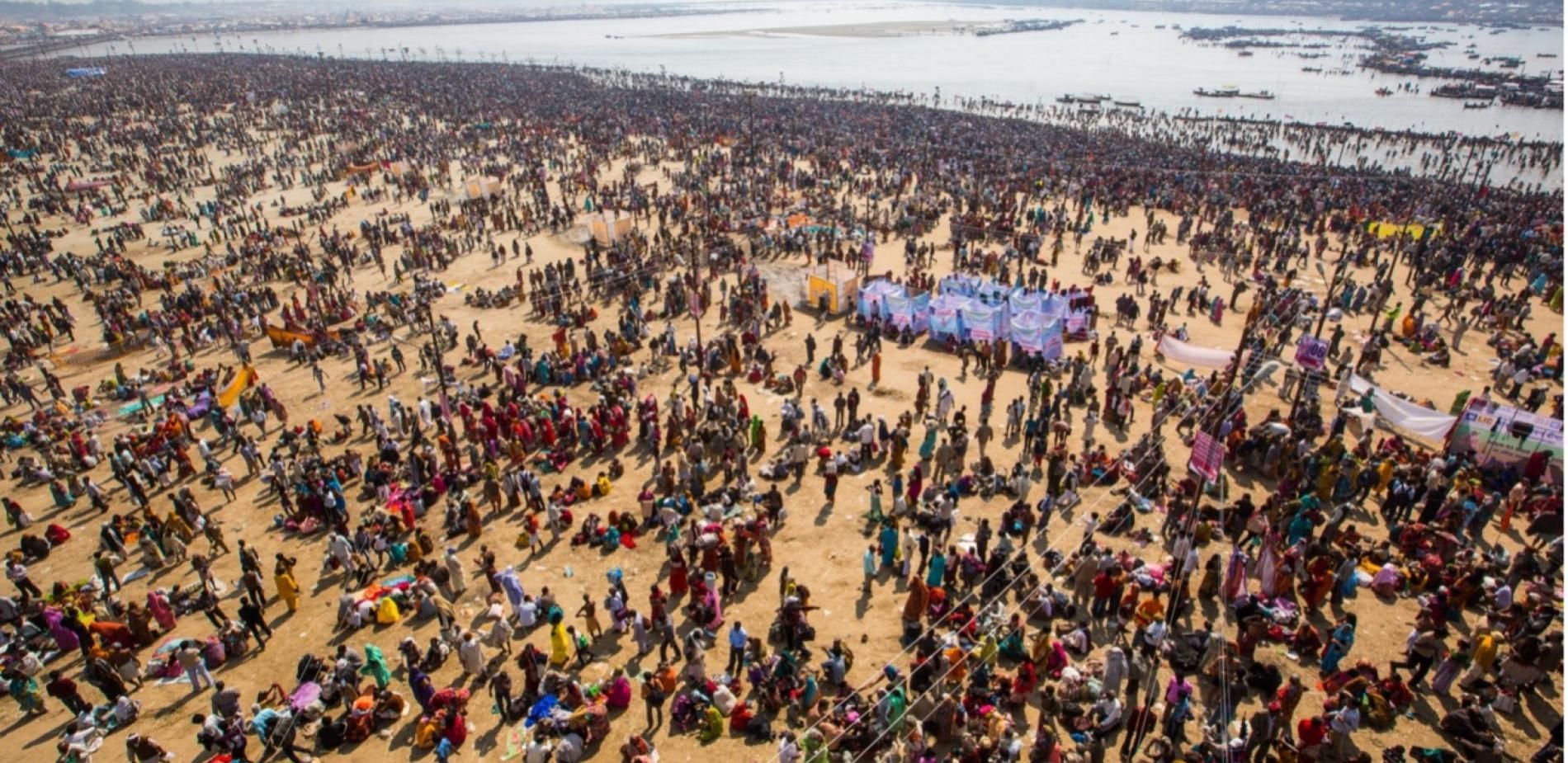
When demography reshuffles the deck
By 2100, humanity will have some 10 billion people. New giants such as Nigeria will appear alongside India and China, far ahead of the Western countries.
by Marina Julienne - Published on
Towards a peak of 10 billion
With growth now slowing down, the world’s population is expected to reach a plateau in around 2080, before declining.
For a long time, the number of births and deaths was balanced, and the population was therefore fairly stable. In the 18th century, thanks to economic growth, medical progress and hygiene, exceptional growth began, marking the start of the “demographic transition”. Between 1800—the date of the “first billion” humans—and today, the world’s population has increased eightfold! This upward trend is set to continue until 2050, when there will be 9.7 billion human beings, according to the latest United Nations forecasts, published in mid-2022. This will result in a new distribution of the world’s leading positions: from 2023, India will replace China as the most populous country in the world, with 1.43 billion inhabitants (1.7 billion in 2050). As for the current “number 1”, its population will decrease from 2023: less than 800 million inhabitants in 2100, compared with 1.4 billion in 2022. Like China, many countries have now reached a low fertility level, the final stage of the demographic transition: their populations are stagnating or even decreasing. On a global scale, however, growth continues because of “demographic inertia”: births still outnumber deaths by two to one; the majority of parents who will have children in 2030 or 2040 have already been born. But this growth is now slower: 2% in the 1970s, but only 1% per year on the eve of the 2020 health crisis. According to the most likely scenario, the world’s population would therefore reach 10.4 billion people in around 2080 and then remain stable until 2100, before declining.
Today's births are tomorrow's populations

Unevenly distributed growth
Within a few decades, one in three people will be African. On the other hand, there will be fewer and fewer Westerners.
Forty years ago, the United Nations estimated that the world’s population would reach 10 to 11 billion by 2080—a figure close to the one used in the current scenario. But at the time, forecasters overestimated Asian and Latin American growth, and underestimated African growth. They imagined that there would be 2.2 billion Africans on the planet in 2100, whereas the 2022 projections are based on 4 billion Africans, i.e. one human being in three! This gap between past and present scenarios is explained by Africa’s fertility rate, which remains high: 4.2 children per woman on average, compared with 2.3 on a global level. Admittedly, it is not uniform across the continent: Algeria, South Africa and Kenya began their demographic transition in the 1960s. But in nine African countries, women still give birth to more than five children on average, with Niger holding the world record with an average of 6.7 children. On other continents, the population is declining. In Europe, it is expected to fall by 7% by 2050. For 30-odd countries, including Japan and South Korea, the decline will exceed 10% between 2019 and 2050. Meanwhile, the population of the former Soviet bloc is expected to fall by more than 20% by 2050. Some of these countries—Bulgaria and Latvia, for example—are experiencing a “demographic triple whammy”: a falling birth rate (fertility rate below 1.5 for the past 20 years), rising mortality (linked to the deterioration of health services, and alcoholism) and rising emigration.

Nigeria, the new giant
With 216 million inhabitants, Nigeria is already the most populous country in Africa. One in six Africans is Nigerian! Yet the country’s population will double within 40 years and could reach nearly 550 million by 2100, placing it in third place worldwide behind China. This growth is due to high fertility: 5.1 children per woman today and up to 8 children in rural areas. In a territory of some 920,000 sq. km., less than twice the size of mainland France, demographic pressure is already a source of conflict, particularly over access to water and land.
After 2050, forecasts are more uncertain
It is difficult to predict with certainty the evolution of parameters like the number of children per woman and life expectancy beyond 20 or 30 years.
To calculate the size of a population in the future and its distribution by age and sex, researchers extend the trends provided by current fertility, mortality and migration data. In this way, they draw up scenarios with high and low ranges, including an average forecast: the most plausible. Over a period of 20 to 30 years, these projections are realistic—not taking into account unpredictable events such as epidemics, conflicts or natural disasters, which are by nature impossible to model. But the further away in time they are, the more uncertain they become. For example, fertility—which has a crucial impact on the future size of a population—can produce some surprises! For example, demographers have long believed that fertility, even in countries where it was falling, would rise to 2.1 children per woman: the threshold that would allow couples to be “replaced” by two children and ensure demographic stability. However, in the countries concerned, fertility has remained below this “generation replacement” level, despite a significant rise since the 2000s in several EU countries (including Germany, Romania, Poland and the Czech Republic). At what level will fertility stabilise by 2100? It is difficult to know. Some scenarios anticipate a rapid fall in world fertility: after peaking at 9.7 billion in 2050, the population could be 8.8 billion in 2100, i.e. 2 billion less than in the UN projections. 1
1 The Lancet, 14 July 2020
A sometimes declining life expectancy
Driven by economic and medical progress, global life expectancy is expected to reach 82 years by 2100 (73 today). But even in developed countries, life expectancy can decline. In the United States, excess mortality from Covid-19 led to a 2.7-year decline in life expectancy between 2019 and 2021, while improvements in healthcare are already threatened by rising cardiovascular disease and the opioid epidemic. Moreover, although health conditions are generally better in cities than in rural areas, urbanisation will worsen air pollution, causing millions more deaths, especially in Asia. By 2050, 68% of the world’s population will be living in cities (57% in 2022).

Great poverty at the end of growth?
An influx of very young people can be a source of economic development . . . if everyone can be educated and fed.
Between 1970 and 1990, the “little dragons” of Asia (South Korea, Taiwan, Singapore and Hong Kong) underwent exceptional demographic and economic growth. The proportion of young people in the workforce soared from 42% to 54% of the population between 1960 and 1990 in Taiwan, for example. But the economic “miracle” only happens if governments invest heavily in human capital—including health, family planning and education—and economic capital, because maximising the “demographic dividend” means employing the young people who enter the labour market. Will African countries also seize the development opportunity presented by a very young population? The continent is currently home to more than 60% of the world’s extremely poor people, living on less than $1.90 a day, and this rate is expected to rise to 90% by 2030, according to the World Bank. Situations vary widely from region to region. In Morocco, Algeria, Tunisia and Egypt, the percentage of the population living in extreme poverty is 5%, compared with 70% in Nigeria and the Democratic Republic of Congo: two countries that will be among the most populous in the world in 2100.

"Climate migrants": regional movements
Will “climate migrants” from the South abandon their countries for the North? Research, which is still scarce, shows that climate change may lead to population displacements, but that these are mostly temporary and short-distance migrations, with people returning to their original habitat as soon as they can. Indeed, the only available projections assume regional, not global, displacement. By 2050, the World Bank estimates that there will be up to 86 million internal climate migrants in sub-Saharan Africa, nearly 90 million in Asia and 17 million in Latin America.
Migration: a situation difficult to predict
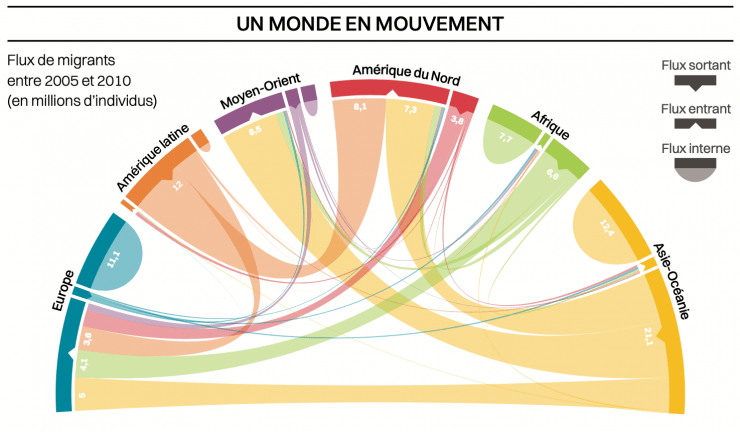
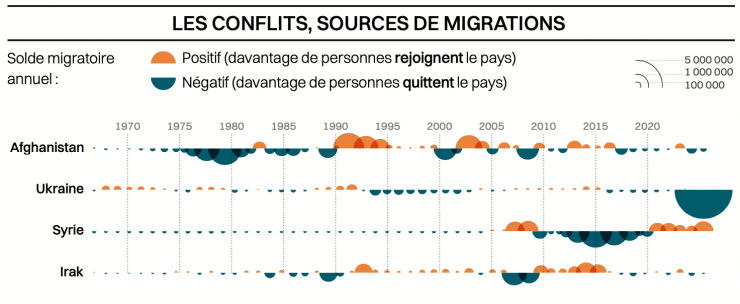
Migration plays an increasing role
Only a small fraction of the world’s population chooses to migrate. But it plays an increasing role in the demographic balance of the Northern countries.
In 2020, 281 million people were living outside their country of birth: three times more than in 1970, according to the IOM. 2 However, these international migrants represent only 3.6% of the world’s population: one person in 30. And of these, only a third have moved from a developing to a developed country, as most migration is between countries of similar economic status. So the image of the young, single, low-skilled man working in a rich country does not correspond to the dominant statistical reality—in 2017, moreover, half of international migrants were aged over 39 and 48% were women. That said, international migration is playing an increasing role locally in developed countries in “demographic decline”, where deaths exceed births. Thus, in Europe (which received 87 million international migrants in 2020) or in North America (59 million), international migrations help to slow down or avoid population decline. But they also play a role in the countries of origin: in 2020, 40% of international migrants came from Asia, particularly China and India, i.e. 115 million people. What will happen in the future? Predicting migration trends is a very delicate exercise. Who could have imagined, for example, that some 7 million Ukrainians would leave their country in 2022? In its future scenarios, the United Nations is not taking any risks: it is projecting constant migration levels until 2100!
2 State of World Migration in 2022, International Organisation for Migration

Desperately seeking a wife
The demographic imbalance in favour of men is upsetting the heterosexual marriage “market”. China is a speaking case: the surplus of men of marriageable age will increase by around 1.3 million per year over the next 20 years. According to INED (French National Institute of Demographic Studies), this means a “surplus” of 41 million men over the age of 22 in 2041! By 2050, in China as in India, the number of single men looks set to exceed that of women by 50%. The parents who wanted a boy so much probably never imagined that he would later be unable to marry and carry on the family lineage. . .
Towards a rebalancing of the sexes?
There are more men than women in the world, but the situation is expected to turn around from 2050 onwards.
On average, 105 boys are born for every 100 girls. This slight imbalance is still unexplained, but it is believed to be natural, as it has been observed since the beginning of population statistics in the early 19th century. It is partially corrected by a lower mortality rate for girls in the earliest stages in life. However, the gap is widening in favour of boys in societies marked by strong gender inequalities: patriarchy, the obligation of giving a marriage dowry to brides, unequal inheritance according to sex, etc. Thus, for several decades, in Asia—India and China in particular—and Eastern Europe, 110 to 117 boys have been born for every 100 girls, due to selective abortions. As a result, there are now 44 million more men than women in the world. However, a longer life expectancy—75 for women and 71 for men in 2020—means there are more women in the older age groups. In the world, gender balance should thus be reached by 2050 and women could even become the majority beyond that, as they live longer. Finally, public policies in favour of gender equality, such as those in India and China, could bear fruit. South Korea shows that the phenomenon of the masculinisation of births is reversible, since a balance between the two sexes was restored in the early 2010s, thanks to the mobilisation of public authorities.
8 billion people... what’s next?
- The end of unprecedented growth
- When demography reshuffles the deck
- Too many mouths to feed?
- An ageing population
